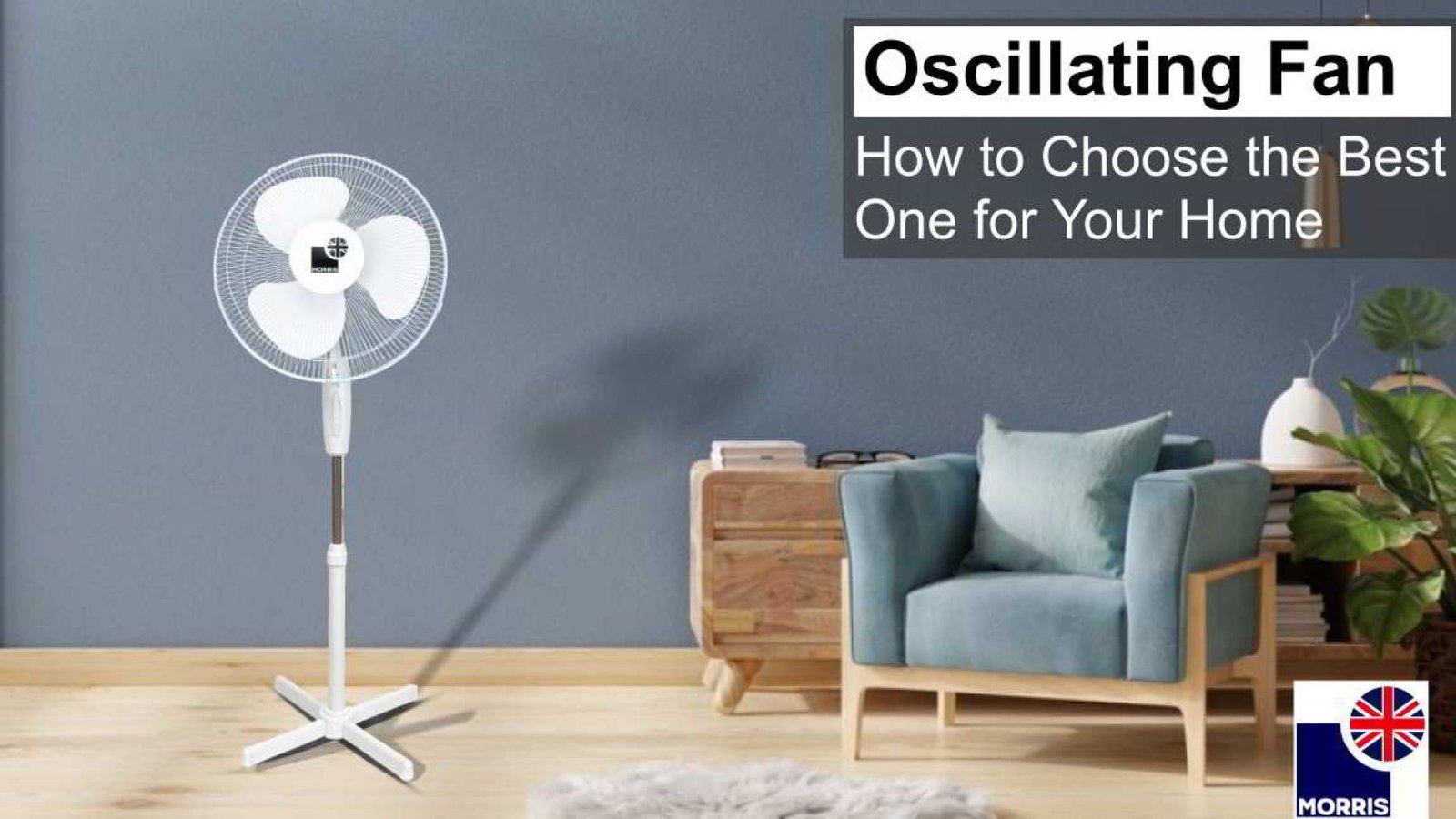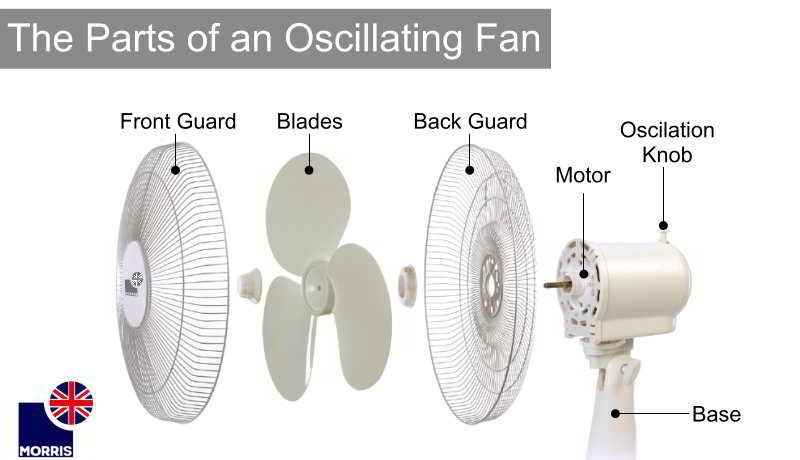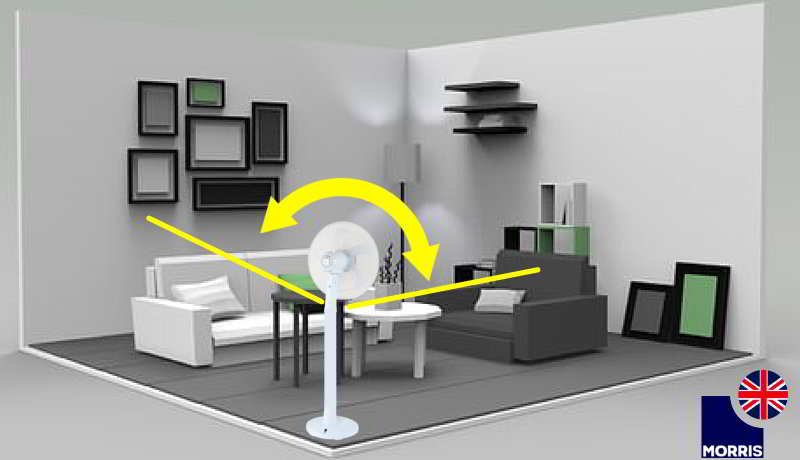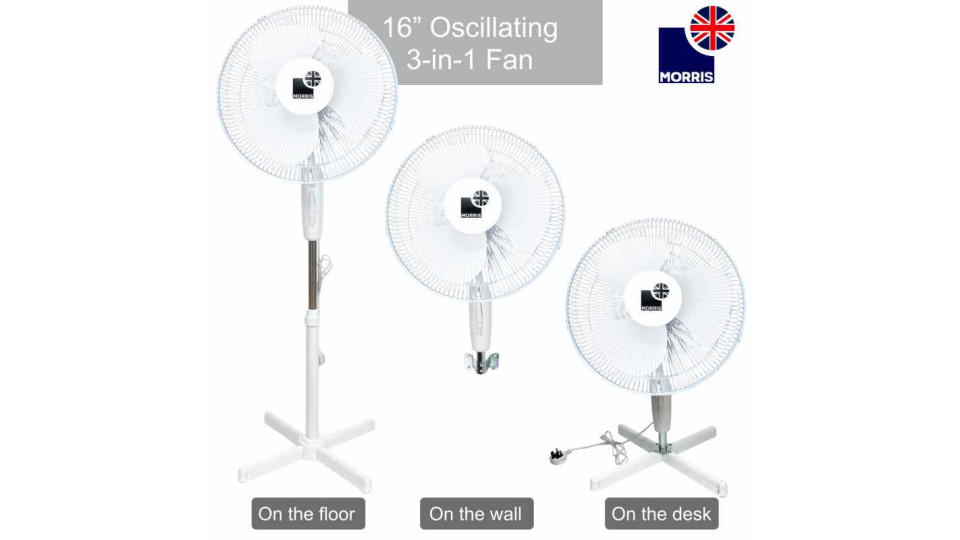Are you struggling to find the perfect oscillating fan for your home? With the scorching summer heat just around the corner, it is important to keep your living space cool and comfortable. Yet, with so many options on the market, choosing the best oscillating fan for your cooling needs can be a bit overwhelming.
In this guide, we will walk you through everything you need to know to make an informed decision. From what an oscillating fan is, how to make your fan blow more air, to when to consider other alternatives when cooling large spaces. We also discuss the best position to place a fan when cooling a room and what to do to increase the longevity of your oscillating fan.
What is an oscillating fan?
An oscillating fan is a type of electric fan that is designed to rotate or oscillate from side to side, covering a wider area with its airflow. It consists of a motor, blades, and a base. The motor powers the rotation of the blades, which are responsible for generating the airflow that provides a cooling effect.
The main feature of an oscillating fan is its ability to move back and forth in a sweeping motion. This oscillation is achieved by a mechanism within the fan's base that causes it to pivot or rotate on its axis. The angle and range of oscillation can usually be adjusted to suit the user's preference.
By oscillating, the fan distributes the air over a larger area, providing better air circulation and cooling. This feature makes oscillating fans popular choices for use in homes, offices, bedrooms, and other spaces where cooling and air movement is desired. They can be used to cool a room, provide relief on hot days, or even help circulate the air in a stuffy environment.
Oscillating fans come in various sizes, styles, and power capacities, ranging from small desk fans to larger pedestal or tower fans. Some models also include additional features such as adjustable speed settings, timers, remote controls, and even built-in air purifiers.
Why does my fan feel like it’s not blowing air?
How much air an oscillating fan blows depends on its airflow rating, which is measured in CFM (cubic feet per minute). The higher the CFM rating, the more air the fan is capable of blowing at long distances. Whether it is an industrial fan, pedestal fan, desk fan, or floor fan oscillating to cool a room, ensure it has an airflow rating of at least 1450 CFM for the best results.
Also, here are a couple more things to check if your fan is not blowing air as it should;
Fan speed setting
The reason you are not feeling the breeze from your fan could be its current speed setting. If the fan speed setting is set to low, the airflow may not be strong enough to reach you. Increasing the fan speed can easily solve this problem.
Fan position and direction
Maybe the oscillating fan is not blowing air correctly because of its position or airflow direction. For a fixed fan, angling the device towards you directs air.
Obstructions
Check if any objects are blocking the fan's breeze. Curtains, furniture, or random objects placed too close to the fan may obstruct air circulation. Removing these objects allows the fan to circulate air better.
Dust accumulation
If there are no obstructions in the way, then check inside the fan itself. Fan blades tend to accumulate dust and debris over time, which reduces the effectiveness of the blades. Regularly check and clean the fan blades to restore optimal performance.
Mechanical issues
If the problem is not outside, then check for any signs of damage to the fan's internal components. Is the motor or any of the internal elements worn out or damaged? If yes, then this could be the cause of decreased airflow. It is important to repair or replace these components to restore the fan’s functionality.
How can I cool down a room without windows?
A room without windows will benefit from an oscillating fan. However, factors like fan placement play a huge role in properly ventilating an enclosed room. Here are some tips to remember when using fans in windowless rooms.
1. Placement
Find a suitable place within the room to place the fan. This should be a spot where air flows into the room, for example, a nearby doorway. Ensure that the airway is not blocked so the oscillating fan can direct as much cold air into the room as possible.
2. Power source
The power source should be closest to the air inlet source. If not, find an oscillating fan with a power cord that is long enough to be safely routed around corners to prevent tripping hazards.
3. Air circulation
With no windows in place, ensure that air is circulated to the most crucial parts of the room. This includes areas like corners or tight spaces that tend to be stuffy. Position the fan to cover a wide area for best results.
4. Ventilation
While oscillating fans circulate cold air, they cannot introduce fresh air into a room. You can use a portable air purifier to clean existing air to ensure only fresh air is circulated by the fan.
5. Keep adjacent doors open
Especially doors to rooms with windows. This will increase airflow and prevent air from stagnating in the windowless room.
6. Maintenance
Dust buildup is inevitable in a fan used to cool a windowless room. Regularly clean the fan’s grill and blades to maintain optimal fan performance.
7. Alternative cooling methods
An oscillating fan is a temporary solution for a windowless room. Consider other forms of cooling, like portable air conditioners and dehumidifiers, which will keep a room cool, especially in sweltering heat and humidity.
Where is the best place to put an oscillating fan?
Fan placement is important when you want to beat the heat and maximise the comfort in your home. It will make all the difference, whether you want a focused breeze or improve the overall air circulation in a room. Here are some tips to help you discover the sweet spot for your oscillating fan.
● Place the fan near a window or doorway to draw in cool air and circulate it in a room.
● Place the fan centrally in a room to evenly distribute air. The room will feel more comfortable as air circulates from corner to corner.
● Remove any obstructions that may block the path of air movement. Do not place the oscillating fan behind furniture or in a cramped-up space.
● Ensure you place the oscillating fan on a stable surface. It prevents the fan from wobbling when in operation.
● All oscillating fans produce some noise when operating. Consider an oscillating fan with a lower noise level if you are a sensitive sleeper. Placing the fan away from you also helps reduce noise levels.
● Consider pointing the oscillating fan towards a source of heat or humidity if you are trying to make a room cooler. The breeze from the fan directs heat or moisture away from you. Also using a portable dehumidifier can help speed up the cooling process for a highly humid environment.
What type of fan blows coldest air?
There are various fans on the market to meet the different cooling needs of customers. Oscillating fans or tabletop fans are an inexpensive way to cool any room by providing a focused and enjoyable breeze. However, in some cases, you may need a more powerful solution to blow the coldest air, especially when the weather gets extremely hot.
In such cases, there are cooling alternatives that will deliver the coldest air. Here are a few;
1. Evaporative Coolers
In case your oscillating fan is still not blowing enough air, another inexpensive solution would be an evaporative cooler. Evaporative coolers work by passing hot air through moist cooling pads, causing the water on the pads to evaporate. The evaporation process results in cooler air which is blown back into a room.
While oscillating fans may struggle to blow cold air in a large room, a modern portable evaporative cooler with a CFM rating of 6000 m3/h would do.
2. Misting fans
If you are looking for a fan that blows the coldest air in an outdoor setting, then a misting fan is what you should look for. Misting fans work like a conventional oscillating fan with the added feature of a mist-spraying nozzle. The fan produces a mist which is blown into the environment by the air current passing through the device. The misted air cools the environment immediately, providing relief to an otherwise hot, scorching day. Misting fans are suited for dry hot climates and may not function so well in humid environments.
3. Mancooler fans
Mancooler fans are more suited for commercial or industrial settings where bigger, colder drafts are required. These fans have larger blades and stronger motors to blow a great amount of cold air in factories, construction sites, warehouses, and workshops. In large spaces, a Mancooler fan supplies large amounts of air to provide relief from the heat and also circulate stagnant air.
4. Drum fans
Also known as barrel fans, drum fans are high-volume, low-speed fans used in commercial and industrial settings. It features a cylindrical, drum-shaped design, from which it gets its name. Drum fans can generate large amounts of cold air which they can blow over large distances. Drum fans are energy efficient, very durable, and have a sturdy design to withstand any demanding environment.
Can you leave an oscillating fan on all night?
It is safe to leave an oscillating fan to run all night provided it is in good working condition. Also, you need to consider the energy consumption of the fan to determine if it is worthwhile to leave it running till morning.
First things first, choose the best energy-saving oscillating fan on the market. It should come with a noise rating of 58 dB or below, so it is quiet enough not to interrupt your sleep. Also, get a fan with at least three speed settings; the lowest speed operates more quietly while keeping your room cool.
Ensure your oscillating fan is Energy Star-rated if you will be running it all night. Energy star-rated standing fans use as little as 40w to produce an airflow of up to 1450 CFM. It will keep your room cool all night without raising your monthly energy bills.
Place the fan at a safe distance from you, as opposed to pointing it directly at you. Having the fan blow cold air directly at your face could interrupt your sleep. Placing the fan at a distance ensures air is circulated evenly, and you still get a cool breeze while at it.
How long do oscillating fans last?
How long an oscillating fan will last depends on the quality of the fan, duration of use, and maintenance. A high-quality fan should last 5 to 10 years if well-maintained and used correctly.
Here are some tips to increase the lifespan of your oscillating fan;
● Regularly clean the fan—remove dust or debris that accumulates on the fan blades to maintain the best fan performance. Wipe both the blades and fan grille with a soft, damp cloth, or use a vacuum cleaner with a brush end attached.
● Reduce strain on your fan; avoid straining the fan by leaving it on for hours or operating it in stressful conditions, like in extremely hot or humid environments. Always operate the fan when needed to reduce strain, and possibly reduce the cost of running your fan.
● Lubricate the fan: oil the moving parts of your oscillating fan to reduce wear and tear due to friction. Check the user guide for instructions on how and when to lubricate your fan.
● Handle the fan carefully to reduce damage to the blade, motor, or any of the fan components.
What is the point of an oscillating fan?
An oscillating fan is a worthy investment for cooling a room faster without spending a lot of electricity. Oscillating fans have the advantage of being height and tilt adjustable, allowing you to direct airflow to specific areas for best results. Moreover, these fans are portable, allowing you to place them at different positions to get the most out of the breeze they produce.
Before you leave an oscillating fan running all night, ensure that it has an Energy Star rating for low power consumption, produces less noise, and can operate at low-speed settings so as not to interrupt a good night's sleep. Oscillating fans are designed to last a decade, and they can last even longer with proper usage and maintenance.






